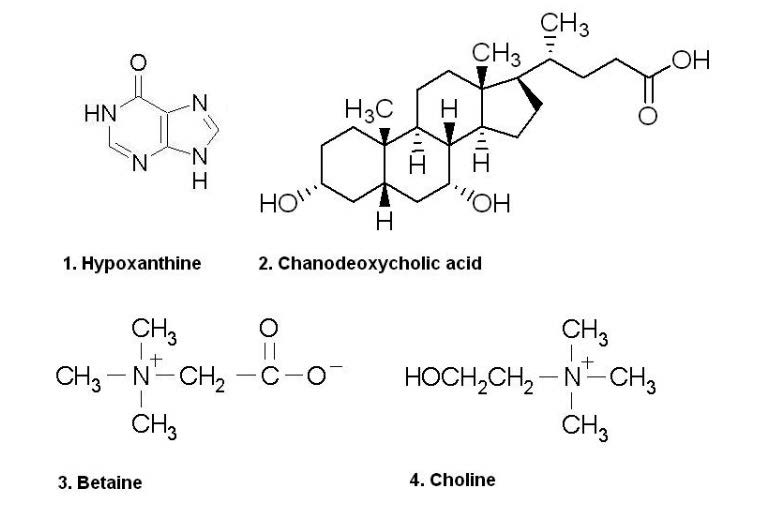Method for a Urinary Purine, Bile Acid and Nutrients
This Method can be used for routine Assays of a Urinary Purine (Hypoxanthine), a Bile Acid (Chenodeoxycholic Acid) and nutrients (Betaine and Choline) in biological fluids. It is very Sensitive due to the high content of the organic component Acetonitrile in the Mobile Phase and the use of “MS friendly” Formic Acid. Very Reproducible with RSD below 0.5% it is also Accurate (MW to 3-4 decimal points).
Peaks:
1. Hypoxanthine 137.04580 m/z (M+H)+, RT = 4.98 min
2. Chenodeoxycholic Acid 393.29990 m/z (M+H)+, RT = 6.23 min
3. Betaine 118.08680 m/z (M+H)+, RT = 15.27 min
4. Choline 104.10754 m/z (M+H)+, RT = 16.82 min
Method Conditions
Column: Cogent Diamond Hydride™, 4μm, 100Å
Catalog No.: 70000-15P-2
Dimensions: 2.1 x 150mm
Mobile Phase:
—A: DI Water / 0.1% Formic Acid (v/v)
—B: Acetonitrile / 0.1% Formic Acid (v/v)
Gradient:
| Time (minutes) | %B |
| 0 | 95 |
| 0.2 | 95 |
| 30 | 50 |
| 35 | 50 |
| 35.1 | 95 |
| 40 | 95 |
Flow rate: 0.4mL / minute
Detection: ESI – pos – Agilent 6210 MSD TOF Mass Spectrometer
Sample Preparation: Human Urine – after simple Extraction
Notes: For the screening of “enzyme defects” in humans, measuring the excretion of purines in urine is considered a good diagnostic tool. High or low excretion levels of hypoxanthine was seen in cases of different types of leukemia. Betaine is an important nutrient and due to its many metabolic roles there is an increasing demand for its measurement. Choline appears to be a good tracer for the detection of a prostate lesion, however, further well-organized studies are needed before it can be used clinically.
Attachment
No 53 Hypoxanthine, Chenodeoxycholic acid, Betaine & Choline Analyzed with LCMS pdf 0.2 Mb Download File




